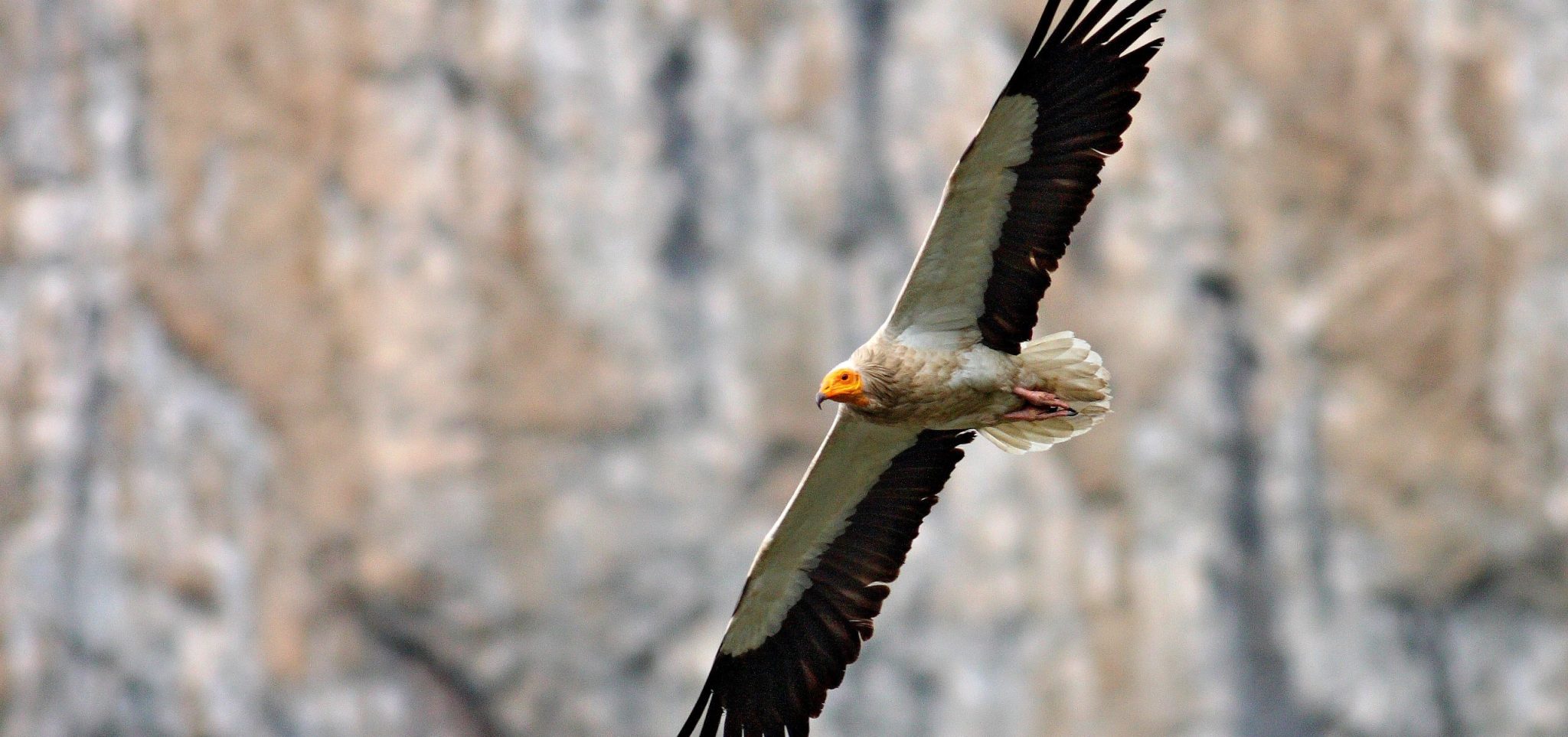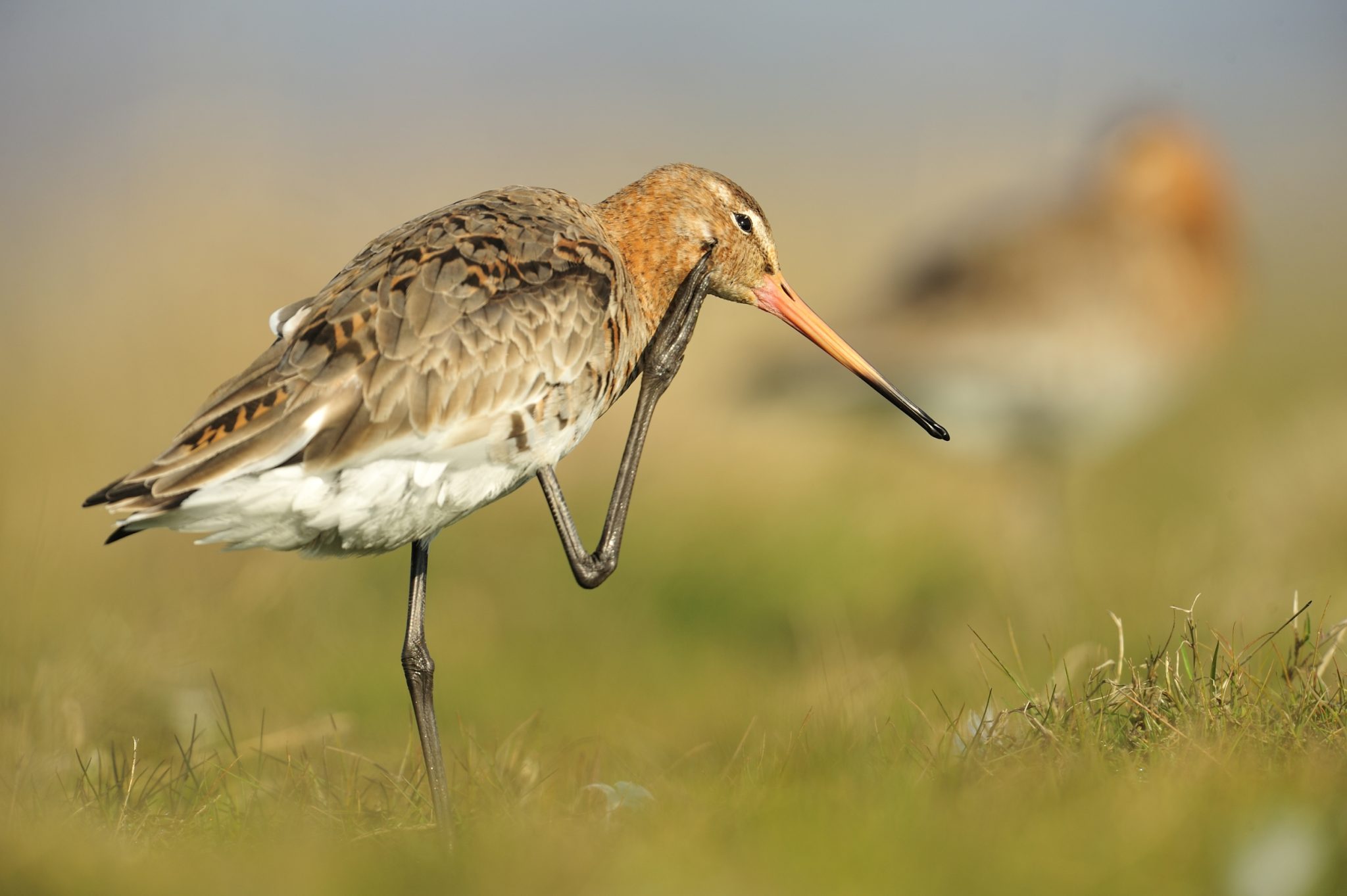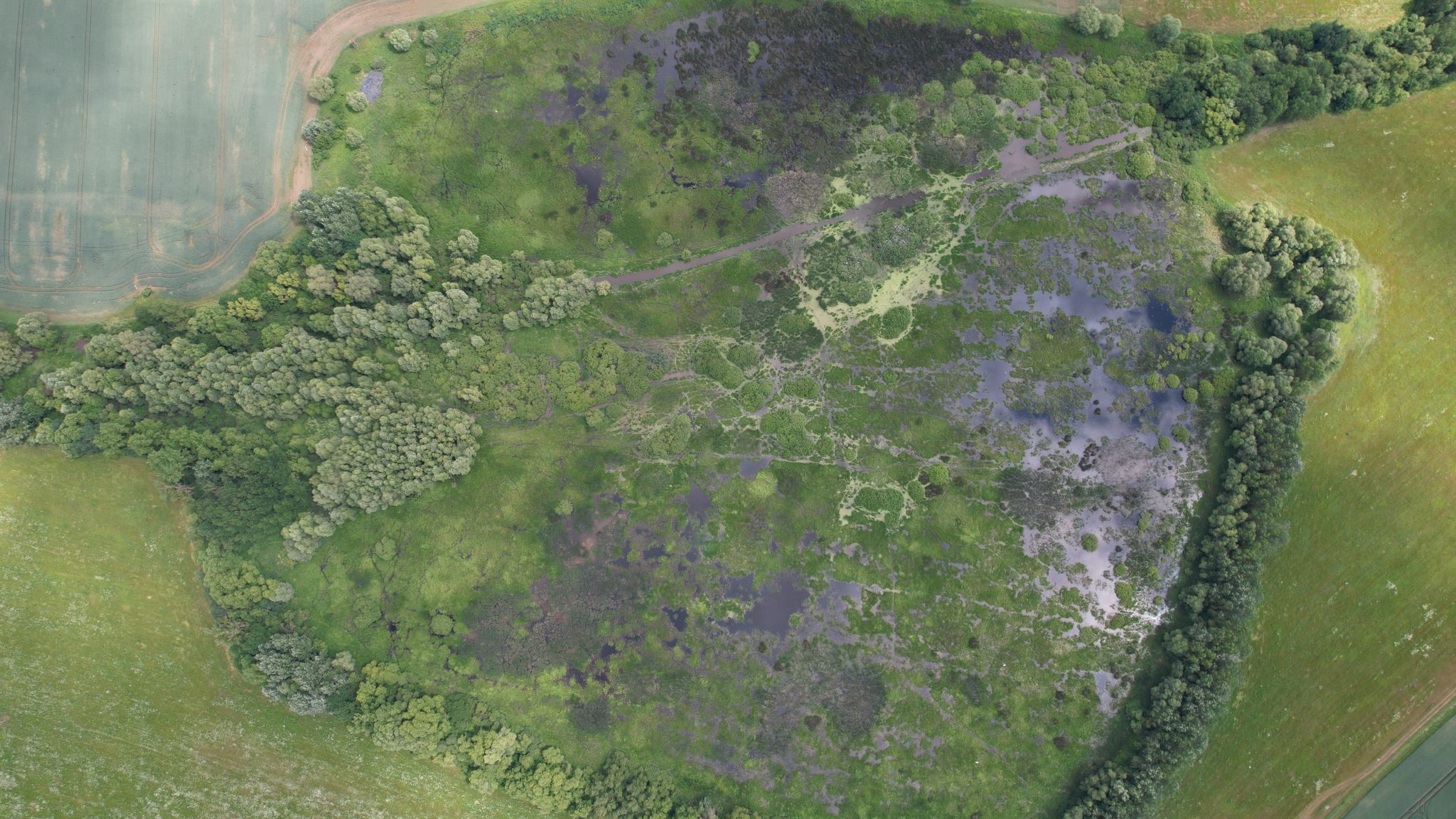Interview: the hero of resilient wetlands
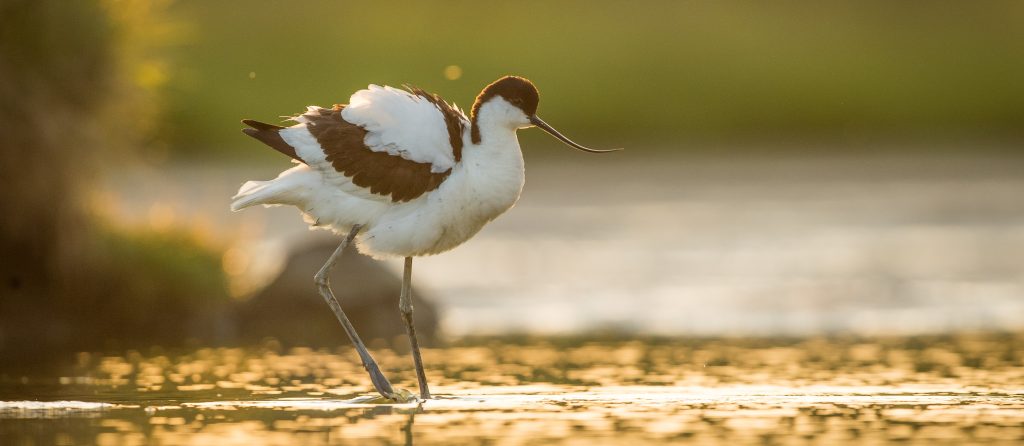
Migrating avocets connect Belgian and Moroccan bird conservationists
When birds migrate, they tell us about the state of our planet. Unbound by national or continental borders, migratory birds cross a wide range of landscapes. Can protecting birds across borders inspire us to restore nature across borders too? Moroccan ornithologist Asmaâ Ouassou and Belgian conservationist Frank Descheemaeker explore this question.
Asmaâ and Frank work with BirdLife to protect avocets in both Morocco and Belgium. Asmaâ is part of GREPOM, BirdLife’s Partner in Morocco and Frank represents Mergus, the bird working group of Natuurpunt (BirdLife’s Partner in Flanders, Belgium). With the motto “protect a bird and you protect all life”, BirdLife works with 123 local Partner organisations globally to protect birds, their habitats, and the nature they depend on.
What makes the avocet so special?
Frank: “It’s no coincidence that the avocet features in logos of several bird organisations. With its curved bill and unique foraging behaviour, it’s an easily recognisable species that represents coastal migration and coastal nature more broadly.”
Asmaâ: “Our bird counters love spotting the avocet. Its graceful appearance and charming behaviour are perfectly captured in its French name: l’Avocette élégante. Its presence is crucial for biodiversity, as avocets help regulate populations of aquatic invertebrates, keeping the food chain in balance.”
How do avocets migrate between Morocco and Northwestern Europe?
Asmaâ: “During migration, avocets rely on a network of crucial wetlands along the Atlantic coast. They favour habitats like mudflats, sandy shores, and estuaries. Morocco serves as a major wintering ground, especially in places like Merja Zerga that teem with invertebrates. In this area alone, we sometimes record more than 20,000 individuals. Before reaching their breeding grounds in northwestern Europe, avocets stop in wetlands across Spain, Portugal, and France to feed and rest. Their route depends on food availability, suitableresting areas, and climate conditions.”
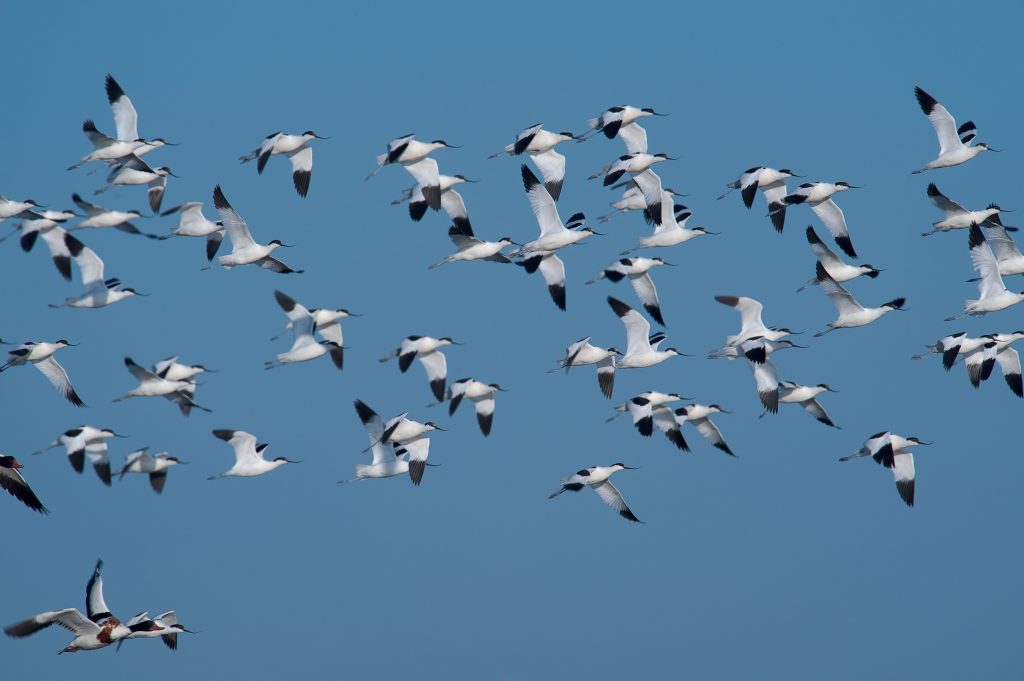
What are the biggest challenges in protecting the avocet?
Asmaâ: “The greatest threats are the loss of wetlands due to urbanisation, intensive agriculture, and pollution. Climate change also affects migration routes and food availability. Additionally, growing human activity in both breeding and wintering areas increases disturbance, leading to less successful breeding.
Frank: “About five years ago, we occasionally encountered an egg collector from the UK along our coast. Since then, the avocet has become very rare in those spots. Fortunately, in Belgium, most avocets breed in protected areas, so human disturbance is minimal. However, the 10% nesting in in low-lying areas along canals and agricultural zones face increasing challenges. Pollution isn’t a major issue yet, nor is sea level rise – so far, we manage water levels well.”
How are these water levels managed?
Frank: “We rely on other Natuurpunt departments: the Agency for Nature and Forests and the Flemish Land Agency. They oversee four key breeding sites: the Zwin in Knokke, Kwetshage in Varsenare, the Uitkerkse Polder in Blankenberge and the municipality of Oudenburg. Using solar-powered pumps and other tools, they maintain optimal water levels. They also keep vegetation low and create breeding islands to keep foxes from preying on nesting birds.
“‘Morocco is a key wintering site for the avocet with over 20,0000 individuals gathering in the Merja Zerga lagoon alone.“
What measures does GREPOM take to protect the avocet?
Asmaâ: “We focus on four main areas:
- Monitoring: We’ve tracked wintering bird populations since 1983, building a database with the University of Rabat’s Scientific Institute and the Ministry of Water and Forest Management. This helps us spot major trends and target conservation efforts effectively.
- Awareness-raising: We work with local communities to highlight the importance of wetlands.
- International collaboration: We partner with organisations like Tour du Valat and Wetlands Internationalthrough networks like the Mediterranean Wetlands Alliance and the Mediterranean Waterbird Network.
- Habitat restoration: We actively protect and restore avocet habitats through direct conservation projects, advocacy, and support for the Ramsar Convention, which identifies globally important wetlands for protection.
Frank: “For 40 years, Mergus has included the avocet in its regular bird counts. We too try to share our data with institutions like the Institute for Nature and Forest Research in Brussels. These counts form the basis for conservation measures. Thanks to the Avimap monitoring project, we can map breeding sites so precisely that land managers can locate every nesting pair in Belgium.”

What do the counts reveal about the avocet’s breeding success?
Frank: “In recent years, avocet numbers have remained stable. While other meadow birds like lapwings, Black-tailed Godwits, and the Redshanks are declining, the avocet is holding its ground, and even increasing slightly.
It’s a bird that adapts easily. It forages in brackish, saline, and freshwater habitats, and its long legs and specialised bill allow it to cope with fluctuating water levels. The islets we’ve created have proven especially beneficial – not just for avocets but for terns, ducks, and other waders too – as food supplies improve. And, unlike the terns, the avocet has so far been spared from bird flu.”
Asmaâ: “Sounds familiar. In Morocco, the avocet is also a symbol of wetland resilience”
What more needs to be done to maintain this success?
Asmaâ: “If I could, I’d strengthen wetland protections, both along the coast and further inland, and create buffer zones to reduce human disturbance. We also need stricter laws. On top of that, I would raise public awareness in Belgium about how to enjoy outdoor activities without disturbing avocets. From our experience in Morocco, collaboration is key. Scientists, birdwatchers, government agencies, and local communities have worked together for years to protect birds.
We’ve managed to educate children early, build a culture of cooperation, and find ways to balance human needs with biodiversity. What’s that Belgian saying expression? ‘L’union fait la force’ – unity is strength.”
Frank: “Totally agree. Monitoring is rewarding, but Mergus is also a social group people learn from one another. 20 years ago, it was quite a challenge to get all stakeholders on board. Today, that’s changed. We now collaborate with the Port Authority of Zeebrugge, farmers, and even regional agricultural bodies. As long as we don’t flood their land unnecessarily, farmers are usually happy to manage water levels in bird-friendly ways. It helps that we’ve been counting swallows at their farms for 20 years, and the city of Bruges gives small subsidies for every swallow nest — another great partnership.”
Asmaâ: “Collaboration is everything. And wouldn’t it be great to strengthen that across borders too? Protecting migratory birds like the avocet depends on coordinated efforts between countries. We need to align Belgium’s and Morocco’s strategies with international conservation frameworks. Beyond our local successes, these cross-border partnerships are what keep us motivated at GREPOM. Every wetland restored, every population stabilised, every new partner we bring into the fold gives us hope – especially in the face of global challenges like the climate crisis.”
“From our experience in Morocco, collaboration is key. Scientists, birdwatchers, government agencies, and local communities have worked together for years to protect birds.”
Want to know more?
Cover picture by Wim Dirckx
This is a translation of the original article in the Natuurpunt magazine by Frank Delmelle.

Who is Asmaâ Ouassou?
2013: Joins Groupe de Recherche pour la Protection des Oiseaux au Maroc (GREPOM), BirdLife’s Partner in Morocco.
2014: Coordinates follow-up programmes and co-authors several national action plans for endangered bird species.
2019: Becomes Vice Treasurer on GREPOM’s Board of Directors.
2021: Begins a PhD in ecology and ornithology at the University of Rabat, focusing on migratory waterbirds in Morocco.
2023: Publishes research on the impact of climate change and rising sea-levels on waterbirds.

Who is Frank Descheemaeker?
1975: Developed an interest in birdwatching through his high school biology teacher.
1978: Graduates in applied economic sciences from the University of Antwerp.
1991: Founds Mergus, the bird study group of Natuurpunt Bruges, Ommeland & Middenkust. He remains its chairman today. Natuurpunt is BirdLife’s Partner in Flanders, Belgium.
1991: Coordinates numerous bird monitoring projects in Northwest Flanders and contributes to field ornithological reports, yearbooks and Mergus magazine.
You might also be interested in:
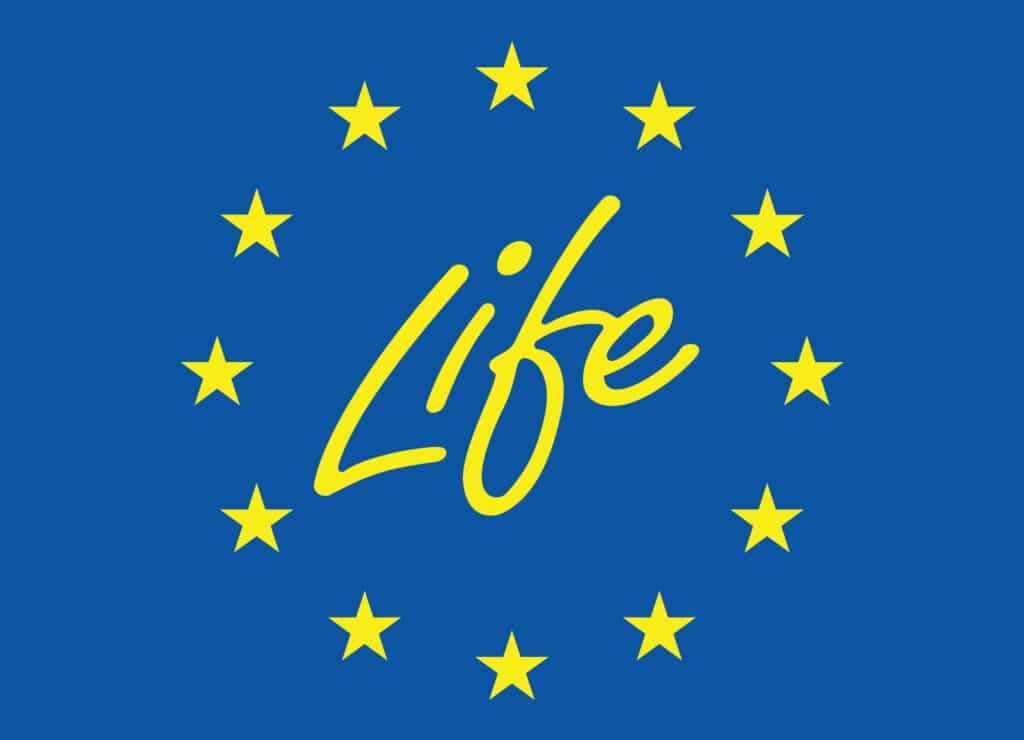 | Stichting BirdLife Europe gratefully acknowledges financial support from the European Commission. All content and opinions expressed on these pages are solely those of Stichting BirdLife Europe. The European Commission is not responsible for any use that may be made of the information it contains. |
